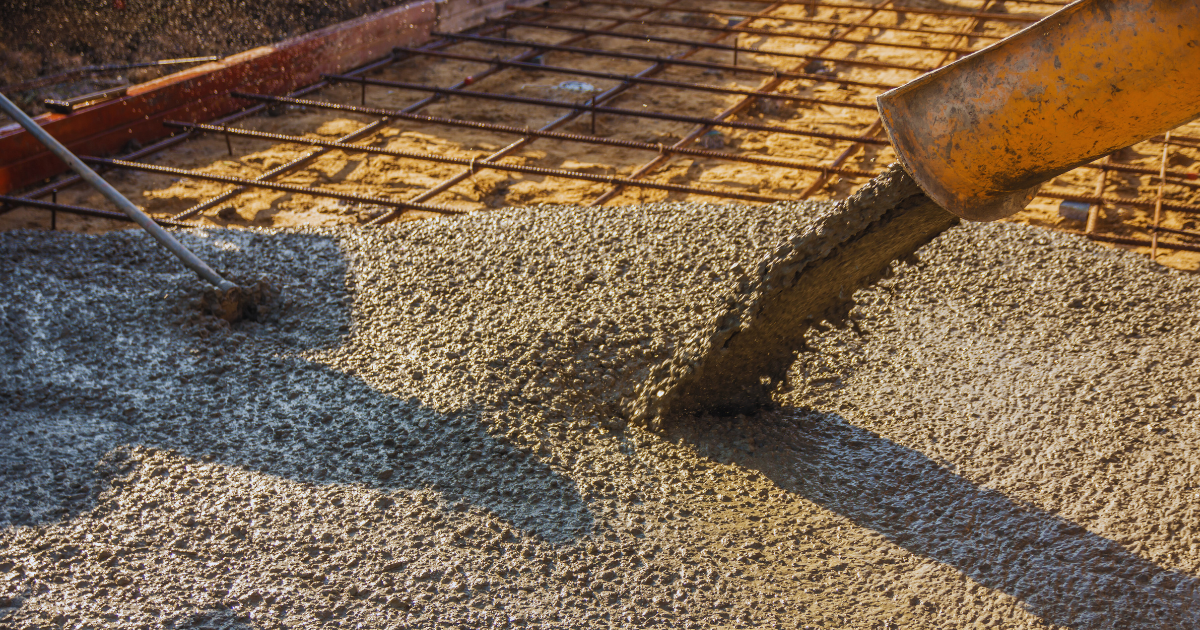Concrete is one of the most widely used building materials, and its quality is critical to the success of any construction project. Among the various tests conducted to assess the quality and workability of concrete, the concrete slump test stands out as one of the most essential. This blog will delve into the basics of concrete slump, its importance in construction, and how it impacts the overall quality of a structure.
What is Concrete Slump?
Concrete slump refers to the measurement of the consistency and workability of fresh concrete before it sets. The term “slump” describes the vertical settling or displacement of the concrete once it is poured into a mold and the mold is lifted away. The test is designed to give an indication of the water content in the mix, which directly affects the workability, strength, and durability of the concrete.
In simpler terms, concrete slump measures how easily the concrete can be moved and placed into formwork. It’s a crucial factor in ensuring that the concrete can be properly handled during construction while still achieving the desired structural integrity.
How is the Concrete Slump Test Performed?
The concrete slump test is straightforward and widely used in the field. Here’s how it’s typically performed:
- Preparation of the Slump Cone: The test uses a metal cone, known as a slump cone, which is 12 inches high with a base diameter of 8 inches and a top diameter of 4 inches. The cone is placed on a flat, non-absorbent surface.
- Filling the Cone: The cone is filled with freshly mixed concrete in three layers. Each layer is tamped down 25 times with a rod to ensure even compaction and removal of air pockets.
- Lifting the Cone: After filling and compacting the concrete, the cone is slowly lifted vertically without disturbing the concrete. This allows the concrete to slump or settle.
- Measuring the Slump: The height difference between the top of the cone and the top of the slumped concrete is measured. This difference is the concrete slump, typically measured in millimeters or inches.
The result provides a quick and relatively simple way to assess the workability of the concrete mix.
Types of Concrete Slump
The concrete slump test can result in three different types of slumps:
- True Slump: In a true slump, the concrete subsides uniformly and retains its shape while decreasing in height. This indicates a well-proportioned mix with good workability.
- Shear Slump: In a shear slump, one side of the concrete collapses or slides, indicating a lack of cohesion in the mix. This type of slump suggests that the mix may be too wet or poorly proportioned, which can lead to issues with strength and durability.
- Collapse Slump: In a collapse slump, the concrete completely collapses and loses its shape. This indicates an excessive water content, making the concrete too fluid and potentially weak.
The type of concrete slump observed during the test gives important clues about the quality of the mix and its suitability for the intended application.
The Importance of Concrete Slump
The concrete slump test is crucial in the construction process for several reasons:
1. Assessing Workability
Workability is the ease with which concrete can be mixed, transported, placed, and finished without segregating or bleeding. A proper concrete slump indicates that the mix has the right amount of water to achieve good workability. If the concrete is too stiff (low slump), it may be difficult to place and finish, leading to potential issues like voids or poor surface quality. On the other hand, if the concrete is too wet (high slump), it may lead to segregation, where the heavier aggregates settle at the bottom, weakening the overall structure.
2. Ensuring Consistency
Consistency in the concrete mix is essential for the structural integrity of a building. By regularly performing the concrete slump test on-site, construction teams can ensure that each batch of concrete maintains the desired properties. This consistency is critical in large projects where multiple batches of concrete are used over extended periods.
3. Predicting Strength and Durability
The water-cement ratio is a key factor in determining the strength and durability of concrete. The concrete slump test indirectly measures this ratio by assessing the mix’s workability. A mix with too much water may be easy to work with, but it will likely produce weaker concrete that is more prone to cracking and weathering over time. Conversely, a mix with too little water may be difficult to work with and result in a structure that lacks durability. By controlling the slump, builders can predict and control the strength and durability of the final product.
4. Quality Control
The concrete slump test serves as an essential tool for quality control on construction sites. By monitoring the slump, site engineers can quickly identify and correct issues with the concrete mix before it is placed. This proactive approach helps prevent costly repairs or failures in the future.
Factors Affecting Concrete Slump
Several factors can influence the concrete slump, including:
1. Water Content
The most significant factor affecting the concrete slump is the amount of water in the mix. More water increases the slump, making the concrete more fluid and workable. However, too much water can weaken the concrete and reduce its durability.
2. Aggregate Size and Shape
The size and shape of the aggregate also affect the concrete slump. Larger aggregates tend to reduce the slump, while smaller, rounder aggregates increase it. The type of aggregate used should be carefully selected to achieve the desired slump and overall concrete quality.
3. Admixtures
Admixtures are chemicals added to concrete to modify its properties. Some admixtures can increase the slump without adding water, which can be beneficial in maintaining strength while improving workability. For example, superplasticizers are commonly used to achieve a higher slump without compromising the strength and durability of the concrete.
4. Temperature
Temperature can also influence the concrete slump. Higher temperatures can cause the water in the concrete mix to evaporate more quickly, reducing the slump. It is important to consider the ambient temperature when mixing and placing concrete to ensure the slump remains within the desired range.
Controlling Concrete Slump on Site
Maintaining the correct concrete slump on-site requires careful monitoring and control. Here are some tips to ensure the slump remains within the desired range:
- Regular Testing: Conduct the concrete slump test frequently during construction to monitor changes in the mix. This allows for real-time adjustments to the water content or other mix components as needed.
- Adjusting Water Content: If the slump is too low, small amounts of water can be added to the mix to increase workability. However, care must be taken not to exceed the water-cement ratio specified for the project.
- Using Admixtures: Consider using admixtures to control the slump without compromising the strength and durability of the concrete. Admixtures can be particularly useful in challenging conditions, such as hot weather or when working with complex formwork.
- Monitoring Temperature: Be aware of the ambient temperature and its effects on the concrete mix. On hot days, take precautions to prevent rapid evaporation of water, such as using cool water in the mix or placing concrete during cooler parts of the day.
Conclusion
The concrete slump test is a simple yet powerful tool for assessing the workability and quality of concrete on construction sites. By understanding the basics of concrete slump and its importance, builders can ensure that their concrete mixes are properly proportioned and suited to the demands of the project. Regular testing and careful control of the slump can lead to stronger, more durable structures that stand the test of time. Whether you’re working on a small residential project or a large commercial development, the concrete slump test should be a key part of your quality control process.







